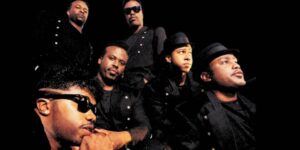Alternative rock and grunge, two genres that dominated the music scene in the 1990s, left an indelible mark on the industry. Emerging as a response to the commercialized, glam metal and pop music of the 1980s, alternative rock and grunge brought a new wave of authenticity and creativity to the forefront.
A Brief History
Alternative rock, as a term, was first coined in the late 1980s to describe the growing number of bands that rejected the mainstream music scene. This movement was characterized by its DIY (do-it-yourself) ethos, with bands self-producing and self-releasing their music. Some of the early pioneers of alternative rock include R.E.M., The Pixies, and Sonic Youth.
Grunge, on the other hand, emerged in the early 1990s, primarily in Seattle, Washington. Grunge bands like Nirvana, Pearl Jam, and Soundgarden combined elements of punk, heavy metal, and indie rock to create a unique sound that resonated with a generation of disaffected youth. The genre’s raw energy, introspective lyrics, and flannel-clad aesthetic captured the attention of the mainstream, leading to a brief but intense period of popularity.
The Sound
Alternative rock and grunge shared a common thread – a rejection of the polished, overproduced sound of mainstream music. Both genres emphasized raw energy, introspection, and authenticity. Guitar-driven and often characterized by distorted riffs, power chords, and heavy drumming, the sound of alternative rock and grunge was both loud and introspective.
Alternative rock tended to be more experimental, incorporating elements of psychedelia, post-punk, and indie rock. Bands like Radiohead, Smashing Pumpkins, and Foo Fighters pushed the boundaries of the genre, incorporating new sounds and styles into their music.
Grunge, on the other hand, was more straightforward, with a focus on simple, catchy melodies and raw, emotive lyrics. The genre’s emphasis on intensity and energy created a sense of catharsis, resonating with fans who felt disillusioned with the mainstream.
The Impact
The impact of alternative rock and grunge on the music industry was profound. Both genres helped to create a new landscape of independent labels, small venues, and underground scenes. The rise of alternative rock and grunge also paved the way for subsequent genres, such as post-punk revival, emo, and indie rock.
More than that, alternative rock and grunge helped to shape the cultural landscape of the 1990s. The flannel-clad, ripped-jeans aesthetic of grunge became a fashion phenomenon, influencing everything from music to film to fashion. The music’s introspective, emotional lyrics and its rejection of mainstream values resonated with a generation of young people seeking authenticity and connection.
Legacy
The legacy of alternative rock and grunge is still felt today. Bands like Foo Fighters, Smashing Pumpkins, and Radiohead continue to produce music that draws on the influences of these genres. The DIY ethos and emphasis on authenticity that defined alternative rock and grunge have also influenced contemporary genres like indie rock, folk, and electronic music.
The impact of alternative rock and grunge can also be seen in the broader cultural landscape. The genre’s emphasis on introspection, emotional authenticity, and creative freedom has influenced everything from literature to film to visual art. The music’s rejection of mainstream values and its celebration of individuality have also had a lasting impact on popular culture.
Conclusion
Alternative rock and grunge may have emerged in the 1990s, but their influence extends far beyond that decade. These genres helped to shape the music industry, popular culture, and the broader cultural landscape. Their emphasis on authenticity, creativity, and emotional connection continues to inspire new generations of musicians, artists, and fans.
FAQs
Q: What is the difference between alternative rock and grunge?
A: Alternative rock is a broader genre that encompasses a range of styles and sounds, including indie rock, post-punk, and psychedelic rock. Grunge, on the other hand, is a specific subgenre that emerged in the early 1990s and is characterized by its heavy, distorted sound and introspective lyrics.
Q: Who are some key bands in the alternative rock and grunge genres?
A: Some key bands in the alternative rock and grunge genres include R.E.M., The Pixies, Sonic Youth, Nirvana, Pearl Jam, Soundgarden, Radiohead, Smashing Pumpkins, and Foo Fighters.
Q: What was the significance of the Seattle music scene in the 1990s?
A: The Seattle music scene played a crucial role in the development of grunge, with bands like Nirvana, Pearl Jam, and Soundgarden emerging from the city and helping to define the genre.
Q: How did alternative rock and grunge influence popular culture?
A: Alternative rock and grunge had a profound influence on popular culture, shaping everything from fashion to film to literature. The genres’ emphasis on authenticity, creativity, and emotional connection helped to create a new cultural landscape that celebrated individuality and nonconformity.






